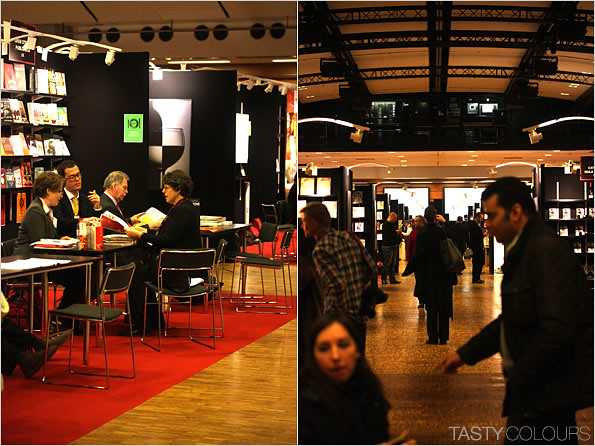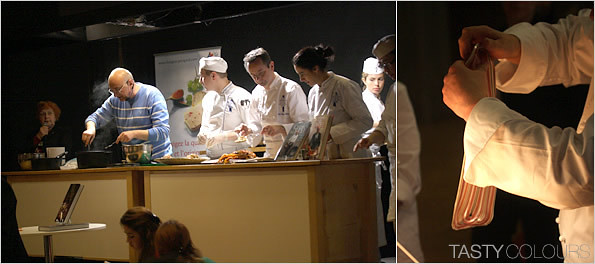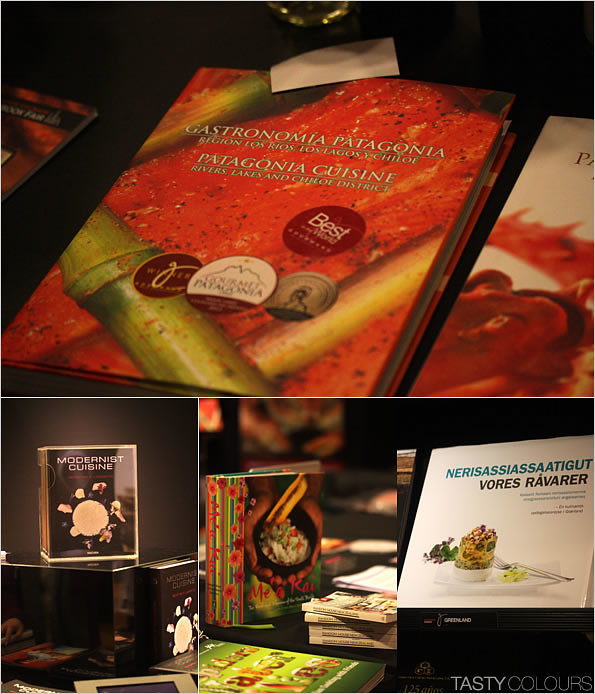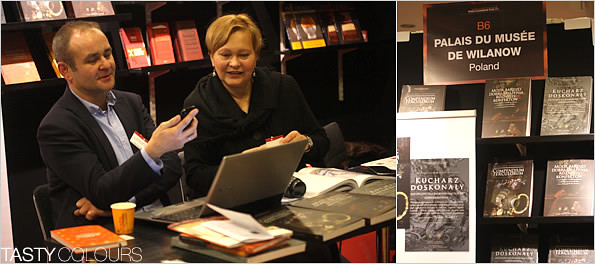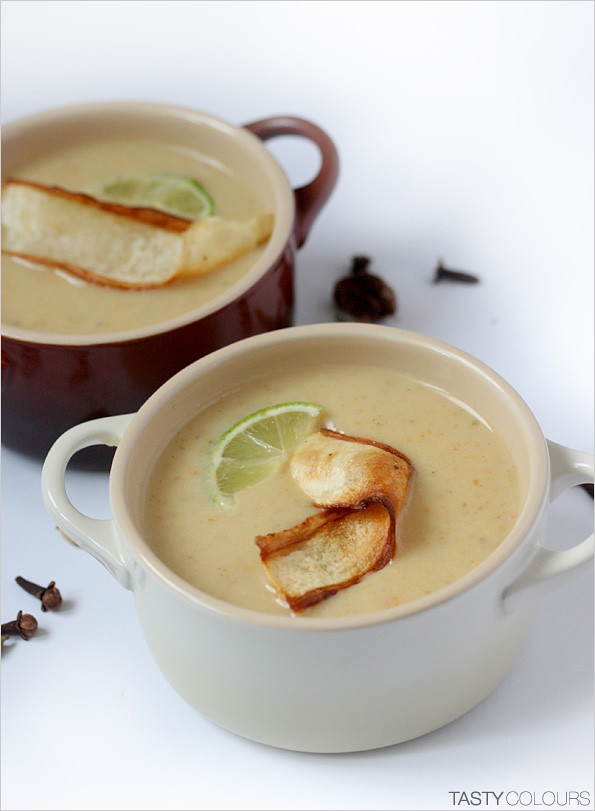Here is Magda’s dad, special guest star of today’s blog post. I would
like to suggest something very Polish and very tasty – sweet specialty prepared
mainly for Carnival season which starts with Christmas and ends on Mardi Gras,
Ash Wednesday. This year it falls quite early – February 13 (I am not
superstitious but does that mean bad luck or what ?)
Our today’s hero is CHRUST (pron. “khroost”). In Polish it literally
means “brushwood”, a bunch of twigs, small and tiny wooden brunches usually
collected in the woods to serve as an easy starter of a bonfire. Similarity is
obvious: these sweet twisted ribbon-shaped deep fried cookies resemble their
natural wooden cousins. As it is in our rich Polish language, there is a
plethora of names for these dessert items – “Chrust, chruściki, faworki,
jaworki, kreple”. All as easy tongue-twisting as almost everything in my
mother’s tongue. But it is much easier to cook. Particular name depends on the
region of Poland they are prepared in. My choice comes from my mom who taught
me to make CHRUST. My family for generations has been proud citizens of royal
city of Krakow, the capital of Małopolska (Lesser Poland) region where CHRUST
label dominate overwhelmingly.
How these cookies should be called in English ? Wikipedia and numerous culinary
websites and recipes name CHRUST as “angel wings”. Sorry, but it sounds
pretentious, a bit kitchy. We (me and Magda) wondered whether a new useful and
corresponding name can be invented. Our conclusion (watch out ! Copyright) is
Crunchy-Branchy. The cookies, when properly prepared, are quite al dente in a sense of crunchiness and
crispiness. And since they are like small pieces of wood, twigs, broken
branches, crunchy-branchy should be
approved and accepted by all cookies lovers.
And, last but not least for this lengthy introduction to the recipe, I
wish to say that dishes, specialties and culinary products strictly tied to a
certain time of the year, special season, religious holidays etc. fill the drawer
of my dearest recipes and flavors. Can you imagine Thanksgiving Day without a
turkey (sorry American friends but you always demonstrate bizarre ability to
overcook this bird unless it becomes tasteless…) ? Advent-lent period without
gingerbread houses ? Mardi Gras without a fish or shellfish ? Christmas dinner
without beloved traditional family dishes ? No way. So CHRUST dominates Poland during
Carnival time.
Making CHRUST (CRUNCHY-BRANCHY) is not too complicated. The secret is
making proper dough and keeping the rules of ingredients that form it.
We will need (for a big plate to be filled with mound of the cookies):
- 2 cups flour
5 egg yolks
(some recipes suggest to add whole eggs but the whites make the cookies
tougher)
4 spoons
dense sour cream
teaspoon of
white vinegar
spoon of
white clear vodka (both liquids make the cookies more fluffy)
2 spoons of
well-softened butter
salt
(sprinkled to the taste, con amore)
oil/fat for
deep frying (olive oil excluded – its flavor is too invasive), at least 1 lb or
½ litre but have more to add if necessary
Dough preparation wooden board would not hurt. Btw, it’s one of my
favorite kitchen tools and utensils.
Making a dough: make a crater in the mound of dough, add all ingredients
and start to mix it. Delicately but with no mercy. The dough may seem too dry
but it’s only initial impression. If you make the dough patiently and
thoroughly (hard labor, nothing comes for free !) it will reach the end as
homogenous, smooth, slightly flexible. It it’s really too dry, add 1 – 2
spoonful of water but frankly speaking the dough need not to drink it. When you
judge the dough to be well-worked out, beat it with a roll for several minutes
– until it starts to reveal small air bubbles. I usually throw the dough
against the wooden board (all sides) but this roars as a thunder and finally I
hear neighbors knocking from the above or from the down under. Then I finish
torturing the dough with a roll.
OK. Now the dough (cylinder-shaped) must take a rest in the
refrigerator. Store it there for about an hour but covered with a linen cloth
or kitchen towel.
Get the dough out of the cool place. Cut into three even pieces. Take
one, the other two put back In the
fridge. Roll. Roll and roll. Don’t rock, just roll until the dough nears paper-thin.
Cut it with a knife into 2,5 cm (1 inch) wide and 12 cm (5 inch) stripes. Make
4 cm (1,5 inch) cut in the middle of each strip. Take one end of each strip and
draw it out through the slit in of the stripe. This way you shape it like a
ribbon. You will truly see this once it is deep fried !
Now it’s time to warm up the fat/oil. I always use my old wok (bought in
1988 for one dollar(!) at a garage sale
in Boulder, Colorado) but any pan or pot for deep frying will do. The fat
temperature is OK when small piece of the dough thrown upon immediately comes
out to the surface “boiling”. Now you can softly put the dough ribbons into the
hot oil. Not too many at a time, otherwise they will fry unevenly. For the same
reason, turn them quickly when frying. Final color should be deep golden
towards light brown. Gently (it’s CHRUST, pretty fragile “brushwood”) take the
cookies out of the pan. Bring down the heat under the pan otherwise the fat
will start burning. Dry the cookies on the paper towel, then move onto the
large plate. When the first layer covers the plate, sprinkle it snow-white with
the confectioner’s sugar. It sounds a
bit complicated, but believe me, it is not. Especially when you have a helper
in the kitchen (no kids ! Boiling oil is a mortal danger and scars from oil
burns can be lifelong) who moves the cookies from here to there.
What else ? You repeat the sequence of the activities unless all dough
has been rolled out, cut into stripes, ribbon-shaped and fried. What’s crucial
for successful frying operation is maintaining proper oil/fat temperature. And
adding some fat (cookies absorb it when fried) every now and then. Don’t be
frightened: you will get necessary experience after just one session.
The satisfaction of admiring the mountain of fantastic CHRUST cookies on
the plate dusted with sugar snow rewards all efforts. And they are so
delicious, so unique in texture, taste and flavor ! Writing this I already have
my mouth watered all over even if swallowed final pieces of my CRUNCHY-BRANCHY
only last Sunday. And don’t leave them for the following day. This is kind of
food to be consumed the very same evening.
Cuisines of several nations include making “angel wings” cookies like
Polish CHRUST. But believe me, none taste like ours.
The real sweet bonanza in Poland comes on “Tłusty Czwartek”, last “Fat”
Thursday before Ash Wednesday. Everybody eats “pączki” (Polish style doughnuts)
on this day. But that’s another story, for another post.
Vive le Carnaval à la Polonaise !
WERSJA POLSKA:
Dzisiaj wpis goscinny mojego Taty - specjalisty od chrustu. Ja chrustu nie umiem robić i pobrałam w ubiegłym tygodniu lekcję. Tata pisze:
Chrust,
chruściki, faworki, jaworki, kreple. Różnie w różnych częściach Polski
nazywane, jak to bywa z wpływem regionalności na kulinarne nazewnictwo.
Etymologii tu nie będziemy objaśniać bo od tego mamy guglowanie/guglanie i inne
wikipedie. Wyznam tylko, że najbardziej lubię nazwę „chrust” właśnie, nie tylko
dlatego, że przejąłem to po krakowsku od Mamy. Chrust to przecież drobne,
kruche i łamliwe gałązki. Cóż za piękna analogia z naturą tych podłużnych
słodkich ciasteczek-chrupanek-kruchanek.
W ogóle
uwielbiam potrawy i kuchenne wykwity związane z jakimś szczególnym okresem
roku, ze świętami jednymi czy drugimi, z dorocznymi okazjami, mniej lub
bardziej podniosłymi. Uwielbiam za ich wyjątkowość i nieprzystawalność do
innego czasu. Boże Narodzenie bez wigilijnego postnego barszczu z uszkami ? Nie
sposób. Ostatki przed Popielcem bez śledzika ? Jakże to. Cudowne amerykańskie
Święto Dziękczynienia bez indyka (zawsze niedobry) ? No way. Adwent bez domków
z piernika ? Unmoeglich. Raz z żoną zrobiliśmy sobie wigilijną kolację w lipcu.
Nagotowałem się, a jakże, było wszystko jak trzeba. Pyszne. Tylko kulturowo
obce jakieś, czułem przy tym posiłku element bluźnierstwa (Śledzika z tego
wyłączam, śledzik jest uniwersalny i ponadczasowy).
No
więc chrust (Kongresówko, wybacz, że nie będzie o faworkach). Może być karnawał
bez niego ? Nie może. Dlatego zawsze jedną z weekendowych sobót końca stycznia,
gdy przyjeżdżam z roboty w Warszawie do krakowskiego domu, poświęcam na
wypełnienie sporego półmiska tym niezbieranym w lesie chrustem.
Roboty
przy tym trochę, ale nie za dużo, choć ciasto wymaga nieco krzepy. Ważne by
trzymac się i proporcji, jak zawsze przy wypiekach czy wysmażkach (to ostatnie
pod copyrightem – wynalazłem przed chwilą). Trud będzie wynagrodzony.
Ja to robię tak. Zacznijmy od
przepisu (żadna tam oryginalna filozofia, sami znajdziecie mnóstwo w necie):
2 szklanki mąki (uniwersalna
czy tortowa, ganz egal)
5 żółtek (niektórzy dają całe
jajka, ale białka powodują twardnienie ciasta)
4 łyżki śmietany (daję 22 %,
ale 18 % też dobra)
Łyżeczka octu spirytusowego
plus łyżka wódki (spirytus lepszy, ale nie zawsze jest w domu, co zresztą nie
znaczy, że wódka też; niektórzy daja jeden z tych płynów, ja oba, smak chrustu
jest wyrazistszy) – oba płyny spulchniają ciasto, ale z octem nie przesadźcie
bo kwaśny chrust to chyba przegięcie
2 łyżki roztopionego masła
(ma być letnie)
Trochę soli (niedużo, parę
szczypt con amore)
Tłuszcz do głębokiego
smażenia (zawsze mam do chrustu kostkę smalcu i kostkę Planty).
No i
stolnica oczywiście. Robienie ciasta na gołym blacie stołu, jak w wielu domach,
lekko je desakralizuje.
Ciasto:
w kopczyku mąki robimy krater i wypełniamy elegancko wszystkimi ingrediencjami
(no, tłuszczem do smażenia nie). I teraz trzeba się trochę pomęczyć. Mieszamy
delikatnie, ale stanowczo, skladniki mają się rozprowadzić równomiernie. Ciasto
wyrobiamy cierpliwie, na początku będzie się wam wydawać, że jest za suche: nic
z tych rzeczy, trzeba wyrabiać i wyrabiać. Jeśli istotnie za suche, można się
posiłkować 1 – 2 łyżkami wody, ale to wobec ciasta nie jest zbyt fair. Gdy już
będzie jednorodne, leciutko rozciągliwe, trzeba je jeszcze skatować tak, by
zaczęło wydzielać pęcherzyki powietrza. Na ogół ludzie tłuką ciasto wałkiem, ja
wolę rzucać nim ze wszystkich stron o stolnicę (huk straszny) tak długo aż z
dołu czy z góry nie usłyszę pukania sąsiada. Jeśli zapuka za wcześnie,
przechodzę na ciosy wałkiem. Gdy ciasto uznamy za gotowe, musi powędrować do
lodówki, by dojrzeć (do godziny). Tylko przykryjcie (nieśmiertelna lniana
ściereczka), bo obeschnie.
Po
lodówce formuję ciasto na kształt dość
grubego wałka/cylindra. Przed rozwałkowaniem dziele go na 3 części – w ten
sposób całość rozwałkowanego ciasta jak raz zmieści się w trzech partiach na
stolnicy.
Rozwałkowuję
pierwszy kawałek – jak najcieniej, od tego zależy delikatność chrupkiego
„wysmażu”, no i kroję (radełko lub nóż) na paski szerokości 2 – 3 cm (wolę
ciastka-patyczki wąskie od szerokich) i długości 12 – 15 cm. W środku przecinam
pasek na 1/3 długości. Robi się szczelina, przez którą z łatwością
przewleczecie jeden koniec ciastowego paska, formując jakby wstążkę-kokardkę.
Wyznam, że tę czynność bardzo lubię bo znamionuje ostatnią, czyli smażenie. No
to smażymy. Ja to robię w chińskim woku, który drogą kupna nabyłe w 1988 r. na
wyprzedaży garażowej w Colorado za dolara (!). Do dziś go bardzo kocham i
jestem mu bezgranicznie wierny. Jest
stalowy, obrośnięty nagarem, jak przystało, żaden tam teflonowy wycirus.
Rozgrzewamy
tłuszcz. Pół kostki jednego, pół kostki drugiego. Niektórzy smażą na oleju, ale
ja mam jakąś awersję. Tłuszczyk kostkowy ładnie się topi. Temperatura jest
smażalna gdy wrzucony do tłuszczu płatek ciasta szybko wypływa na powierzchnię,
„gotując się”, czyli szybko wysmażając. Średnica woka plus taka ilość tłuszczu
pozwala naraz smażyć ok. 7 chrustowych wstążek. W woku czy rondlu nie może być
za ciasno, paski/wstążki muszą wysmażyć się (po obu stronach, w pewnym momencie
należy je szybko odwrócić) swobodnie i równomiernie. Kolor wysmażonych – złoto
przechodzące w lekki brąz (takie lubię najbardziej). Wyjmujemy delikatnie
cedzakiem i osuszamy na papierowym ręczniku. Potem pomagier, o ile takiego mamy
pod ręką, ma to przełożyć na półmisek. Delikatnie ! Wszakże to chrust, złamie
się pod bardziej grubiańskim palcem. Istotna uwaga: cały czas kontrolujemy
temperaturę tłuszczu; nie można go za bardzo schłodzić, ani nie zostawiać na
full bo zacznie dymić i przypalać kolejne partie wrzucanych wstążek ciasta. No
i tak nam schodzi do końca smażenia pierwszej partii. Pamiętajcie o zgaszeniu
gazu lub zdjęciu rondla z płyty. Tłuszcz się przed następną partią wystudzi,
ale go przecież podgrzejemy, dodając go nieco z kostki bo przecież każde
smażone ciasto coś niecoś go wchłania.
Na
półmisku rozprowadzamy usmażony chrust w równomierną i w miarę szczelną
warstwę. Pojedynczą. Czas na posypanie cukrem-pudrem. Kiedyś to się sypało
mączkę cukrową przez geste sitko. Teraz kupuje się ten puder w ustrojstwie,
którym się kręci a puder jak śnieżny pył sam leci ! Jak mawiają Rosjanie, kak w
kino ! Obfitość obsypania pudrem zależy od Waszego smaku i dozwolonego pułapu
cukru w organiźmie. Potem nakładamy
kolejną warstwę usmażonych faworków (robię tu jedyny raz wyjątek – dla
przyjaciół w Saskiej Kępy), i znów cukier puder.
Potem
wszystko identico z drugim kawałkiem cylindrycznego ciasta, potem z trzecim.
Nim powiem smacznego, jedna przestroga. Przy smażeniu pod żadnym pozorem nie
wolno wpuszczać do kuchni dzieci, ani nadmiernej liczby gapiów. Gotowanie z
wrzącym tłuszczem to naprawdę niebezpieczna robótka a oparzenia bywają tylko
III stopnia i straszliwe.
Po
tej sympatycznej uwadze mowię: bon apetit ! Podanymi proporcjami składników się
specjalnie nie najecie (ale obsypany na biało kopczyk na półmisku zawsze będzie),
lecz po pierwsze – można ilość składników proporcjonalnie zwiększyć, po drugie
– chrust nie jest do obżerania się tylko do chrupano-kruchej zabawy na jeden
wieczór. Za to jaki pyszny !


